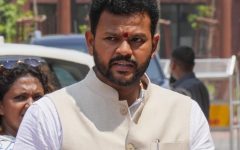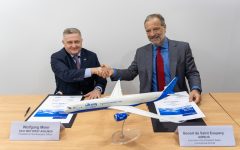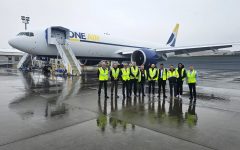 “Infrastructural gaps, regulatory hurdles, and fragmented networks hinder seamless coordination for enhanced multimodal transportation and overcoming these challenges requires holistic solutions like infrastructural upgrades, streamlined regulations, and enhanced technology for real-time tracking,” says Huned Gandhi, Managing Director Indian Subcontinent Air & Sea Logistics, Dachser India. “Public-private partnerships will play a pivotal role in bridging these gaps, ensuring a cohesive ecosystem for multimodal logistics to thrive. In this evolving scenario, multimodal transportation doesn’t just optimise supply chains; it reshapes them entirely, propelling India towards logistical supremacy on the global stage,” he adds and continues, “In the dynamic landscape of logistics, multimodal transportation emerges as the cornerstone reshaping supply chains. With initiatives like Bharatmala, Sagarmala, and the development of inland waterways, India envisions a seamless convergence of rail, road, air, and water networks, unlocking unprecedented opportunities. By seamlessly integrating these networks, logistics gain speed, reliability, and cost-effectiveness, facilitating the swift movement of goods across the nation and beyond. These transformative efforts are bolstered by flagship policies such as Gati Shakti and the National Logistics Policy, which underscore India’s commitment to modernising infrastructure and streamlining regulatory frameworks. Gati Shakti aims to enhance infrastructure connectivity across the country, while the National Logistics Policy focuses on optimising logistics efficiency and reducing costs.
“Infrastructural gaps, regulatory hurdles, and fragmented networks hinder seamless coordination for enhanced multimodal transportation and overcoming these challenges requires holistic solutions like infrastructural upgrades, streamlined regulations, and enhanced technology for real-time tracking,” says Huned Gandhi, Managing Director Indian Subcontinent Air & Sea Logistics, Dachser India. “Public-private partnerships will play a pivotal role in bridging these gaps, ensuring a cohesive ecosystem for multimodal logistics to thrive. In this evolving scenario, multimodal transportation doesn’t just optimise supply chains; it reshapes them entirely, propelling India towards logistical supremacy on the global stage,” he adds and continues, “In the dynamic landscape of logistics, multimodal transportation emerges as the cornerstone reshaping supply chains. With initiatives like Bharatmala, Sagarmala, and the development of inland waterways, India envisions a seamless convergence of rail, road, air, and water networks, unlocking unprecedented opportunities. By seamlessly integrating these networks, logistics gain speed, reliability, and cost-effectiveness, facilitating the swift movement of goods across the nation and beyond. These transformative efforts are bolstered by flagship policies such as Gati Shakti and the National Logistics Policy, which underscore India’s commitment to modernising infrastructure and streamlining regulatory frameworks. Gati Shakti aims to enhance infrastructure connectivity across the country, while the National Logistics Policy focuses on optimising logistics efficiency and reducing costs.
Nevertheless, significant challenges persist.”
Breaking News
- Air freight ambitions to soar to 21 MMT by 2047: Minister
- Silk Way West Airlines expands fleet with two more Airbus A350Fs
- Air One expands cargo fleet, takes delivery of 2nd B777F
- Softlink recognised as Best Tech Service Provider @ICA
- DCSC gets Air Cargo Terminal Operator Award at ICA 2025
- Etihad Airways orders three Airbus A350Fs for global ops
- Glasgow Prestwick Airport plans to expand cargo ops in India
- ‘One Airport, One Product’ to transform India’s cargo ops
- SpiceXpress wins Best Airline & LSP Award
- ‘Global conflicts disrupted supply chains, increased costs’
- Global cargo ops resume at Visakhapatnam Airport
 Cargo Breaking News
Cargo Breaking News


